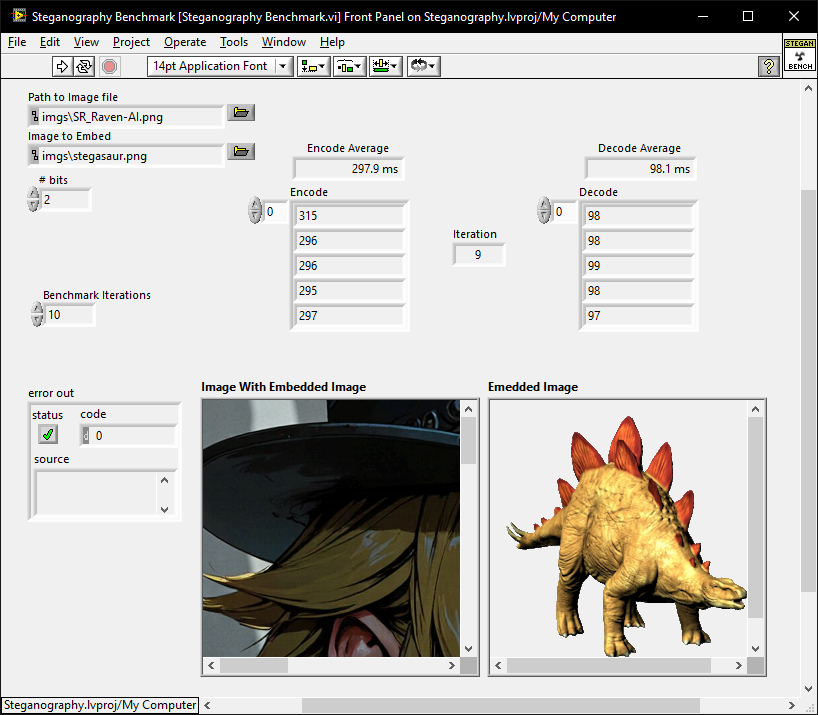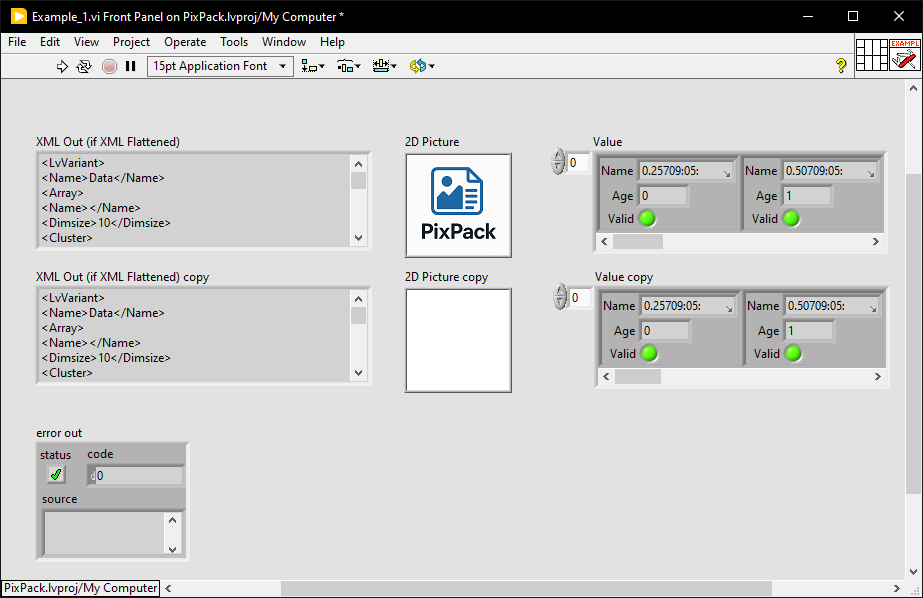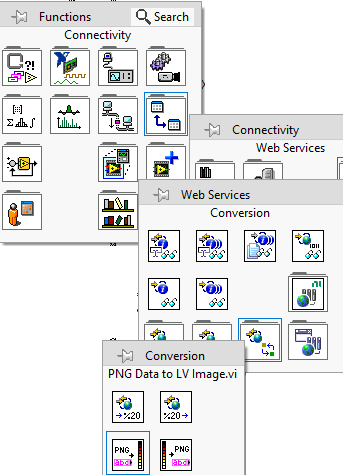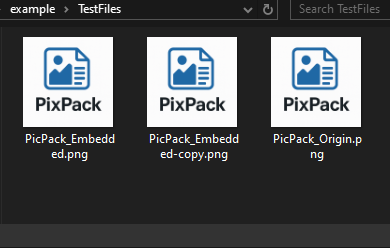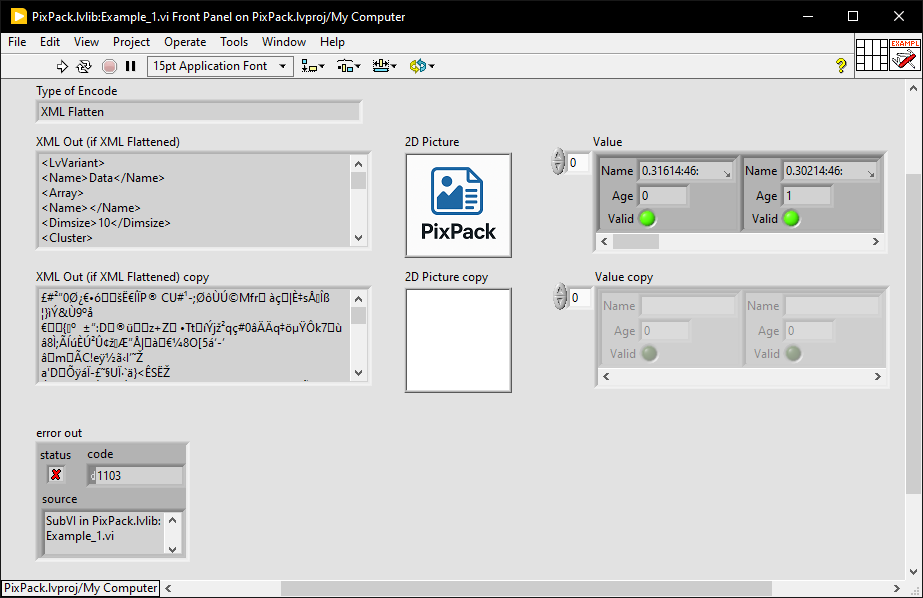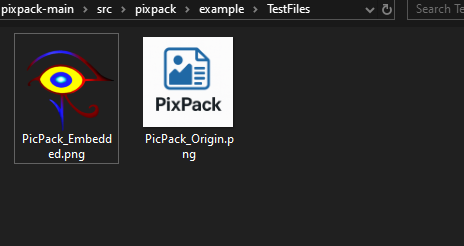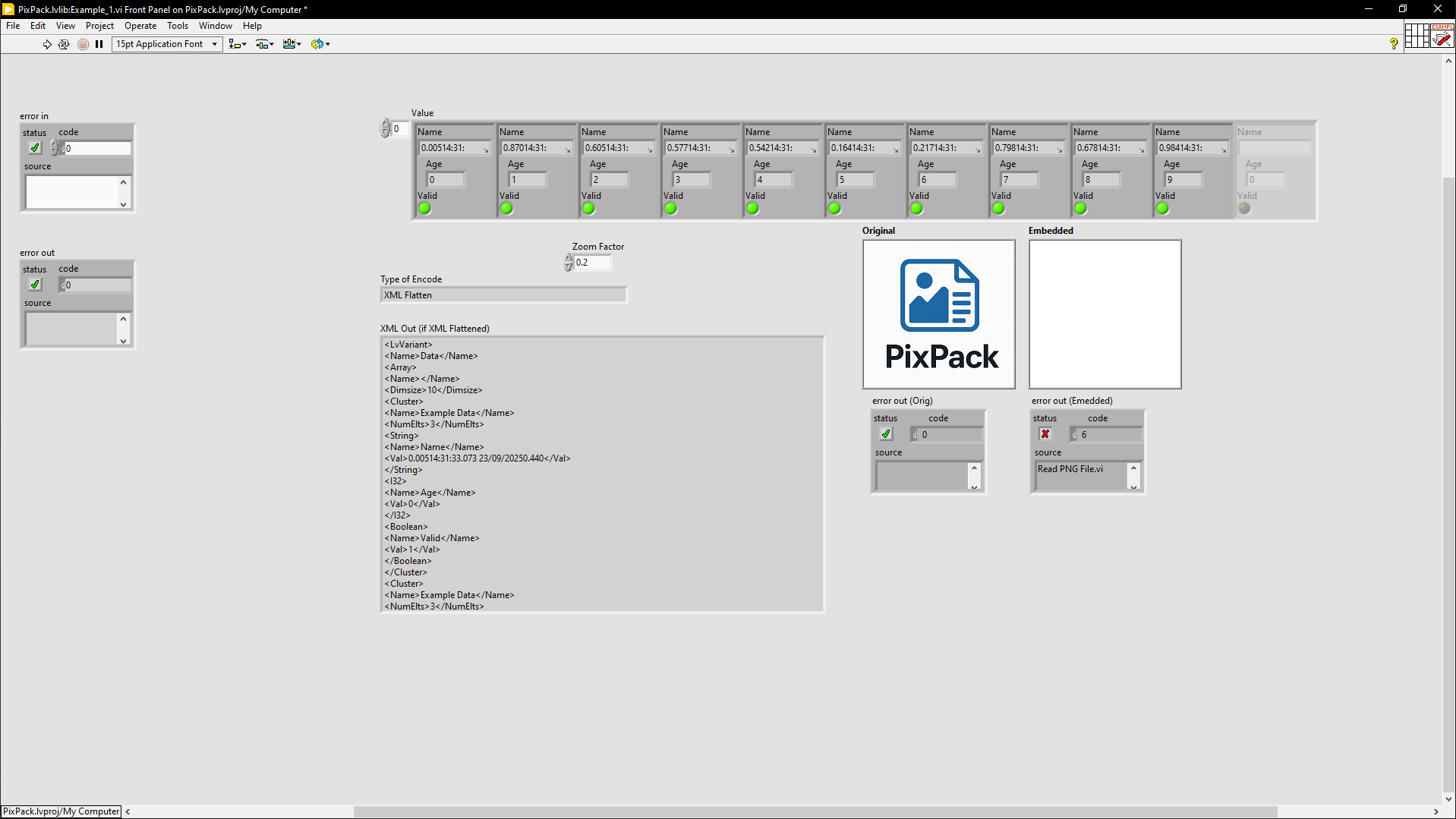-
Posts
4,982 -
Joined
-
Days Won
310
Content Type
Profiles
Forums
Downloads
Gallery
Everything posted by ShaunR
-

LabVIEWs response time during editing becomes so long
ShaunR replied to MikaelH's topic in LabVIEW General
Yes. But not a good enough reason. -

LabVIEWs response time during editing becomes so long
ShaunR replied to MikaelH's topic in LabVIEW General
You may say that but ECL alone is about 1400 Vi's. If each DLL export is a VI then realising the entire export table of some DLLs can create hundreds of VI's, alone. However. I think that probably the OP's project is OOP. Inheritance and composition exponentially balloon the number of VI's - especially if you stick to strict OOP principles. -

LabVIEWs response time during editing becomes so long
ShaunR replied to MikaelH's topic in LabVIEW General
Ooooh. What have you been doing with the icon editor? -

LabVIEWs response time during editing becomes so long
ShaunR replied to MikaelH's topic in LabVIEW General
I still use 2009 - by far the best version. Fast, stable and quick to compile. 2011 was the worst and 2012 not much better. If they had implemented a benevolent JSON primitive instead of the strict one we got, I would have upgraded to 2013. -
Steganography Version 1.0.0 is now released. Enjoy.
-
Should never do this. Anyone can sit between you and the server and decode all your traffic. The proper way is to add the certificate (public key) to a trusted list after manually verifying and checking it. What's the point of using HTTPS if you are going to ignore the security?
-
You can get some of the way like that but there are a couple of bits per byte that have to be concatenated. So at some stage you have to convert to bits. The speed of the encoding for-loops with shift was a surprise to me though. Yup. It was purely for relative performances and will not be included in the release proper. For this sort of thing I would rather deal with relative performance (removes differences between systems that they are bench-marked on). The in-built Performance>Profile Performance and Memory is better for identifying which individual components contribute what; so I would use that if someone found a better solution.
-
I don't do Discord. I don't even do Ni.com. Feedback isn't really necessary. I only knocked it up because I went down a rabbit hole and wasn't impressed with the existing LabVIEW solutions. I thought I'd throw it in here to see if someone could improve it. My solution is optimised but there may have been a better alternative solution or maybe someone had a nice JPEG one (LSB doesn't survive JPEG compression). You might get a mention in the readme just for responding
-
Nothing? No improvements. No bugs? Not even the superfluous length parameter or the example images in the wrong location? I'll give it one more week then release the version 1.0.0
-

LabVIEW 2025 installation on Ubuntu
ShaunR replied to Sam Dexter's topic in LabVIEW Community Edition
I only switched to Win10 3 years ago from Win 7 and that was only because I wanted encrypted SMB to my NAS. I'll think about desktop Linux when they fix their application distribution methods . I dropped my Linux LabVIEW product support for a reason->my products broke every time someone else updated their product. -
This all sounds very awkward for a home automation GUI. Why would you compile software on the target? Surely all the devices are wifi with their own REST API so you only need an aggregating web server with pretty javascript front end. What am I missing?
-
Nah. It was just an icon I generated for an Ollama client.
-
The llama is cuter
-
Hi all. A bit of nerdy fun if you can spare some brain cycles. I've written a Steganography API (0.9.0) and will be putting it on my site under a BSD-3 licence. It currently only uses the LSB method but I may do others if there is interest. I've optimised it as much as I can but I expect that better people than I can improve it's performance. So. The task is to make it as fast as possible. There is a benchmark with some images included so we can do comparative benchmarks. I'm looking forward to some innovative improvements. The winner gets a mention in the readme under SALUTATIONS. If you can find the time and/or inclination then please post your times for the vanilla installation and then after any improvements as shown below. Times to beat so far: LabVIEW 2009 x64, Win10 Before Modification: Encode: 297.9 ms Decode: 98.1 ms After Modification: Encode: 297.9 ms Decode: 98.1 ms Oh yes. And finally. If you find any bugs, let me know and I'll fix them.
-
I couldn't see the hills because they were covered in glaciers.
-
I even remember BridgeVIEW
-
Just be aware that the Caption property is often used for translations.
- 9 replies
-
- ui tools;
- tag engine
-
(and 3 more)
Tagged with:
-

New LabVIEW tool: Embed/Extract data in PNG files
ShaunR replied to BitPack Tools's topic in LabVIEW General
No problem. I just hadn't created a TRUE boolean so that the image is returned (default is false). I usually expect indicators to return things, except if there is an error, and not be conditional on other inputs.- 14 replies
-
- data packaging metadata storage
- field work
- (and 1 more)
-

New LabVIEW tool: Embed/Extract data in PNG files
ShaunR replied to BitPack Tools's topic in LabVIEW General
Nice. While I was trying to figure out why I wasn't getting the image (because there is a boolean to return it ); I noticed you used a temporary file for the png image. There is a better option in the Web Services palette which means you can directly convert a byte string into a LV image without an intermediary file: As you now have two different connector-panes for different modes of operation (text and file embedding), you might want to consider whether a polymorphic VI would be useful for their adapt-to-type feature. Finally. If you are going to distribute the 7zip binary rather than requiring the end user to download it; don't forget to heed the copyright. They want you to add the actual LGPL text rather than reference a URL.- 14 replies
-
- data packaging metadata storage
- field work
- (and 1 more)
-

New LabVIEW tool: Embed/Extract data in PNG files
ShaunR replied to BitPack Tools's topic in LabVIEW General
Your customers also need to be aware of any drawbacks and caveats. If the filename is used as a key for an encryption scheme then perhaps it should be mentioned in the documentation and, additionally, what scheme you are using. I think this will be the most common reason people will seek support from you. I won't harp on much more about the MGI licence but just say, finally, I don't think you fully understand the issue, which could have been completely avoided. Just for reference, I have attached my test harness from above in LV2019. Example_1.vi- 14 replies
-
- data packaging metadata storage
- field work
- (and 1 more)
-

New LabVIEW tool: Embed/Extract data in PNG files
ShaunR replied to BitPack Tools's topic in LabVIEW General
There is. If they create an executable they need to add the copyright to their documentation or distribution in some way as the licence is contained in the MGI VI's description. Example_1.vi- 14 replies
-
- data packaging metadata storage
- field work
- (and 1 more)
-

New LabVIEW tool: Embed/Extract data in PNG files
ShaunR replied to BitPack Tools's topic in LabVIEW General
OK. Now we're cooking with gas. Some minor (and one major*) comments. Data does not survive a copy operation.* Error in (No error) shouldn't be required. Add a document that states the licence conditions that you are distributing under (e.g. MIT, BSD, Creative Commons etc) Use a Hex Encode and Decode you have written. Don't use the two MGI utilities. Make your logo smaller. With regards #4. You are only using two MGI utils to convert to and from hex chars. That can easily be done natively without requiring installation of a 3rd party toolkit. Using those two requires the end user add an additional copyright statement to their binary distribution that they may not be aware of (were you?). Save them (and yourself) the copyright issues. If you are going to use 3rd party toolkit, require they install them as a dependency then you will not have copyright issues ... but you don't need it for this.- 14 replies
-
- data packaging metadata storage
- field work
- (and 1 more)
-

New LabVIEW tool: Embed/Extract data in PNG files
ShaunR replied to BitPack Tools's topic in LabVIEW General
It doesn't seem to produce a valid png (either as XML or "not encoded"). I've changed the extension name of the produced file (.notaping) because the web interface will not allow uploading as a png. PicPack_Embedded.notapng- 14 replies
-
- data packaging metadata storage
- field work
- (and 1 more)




